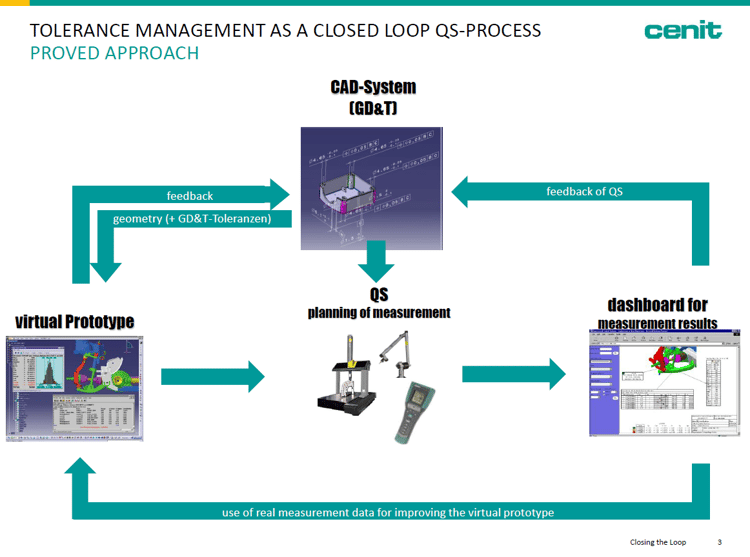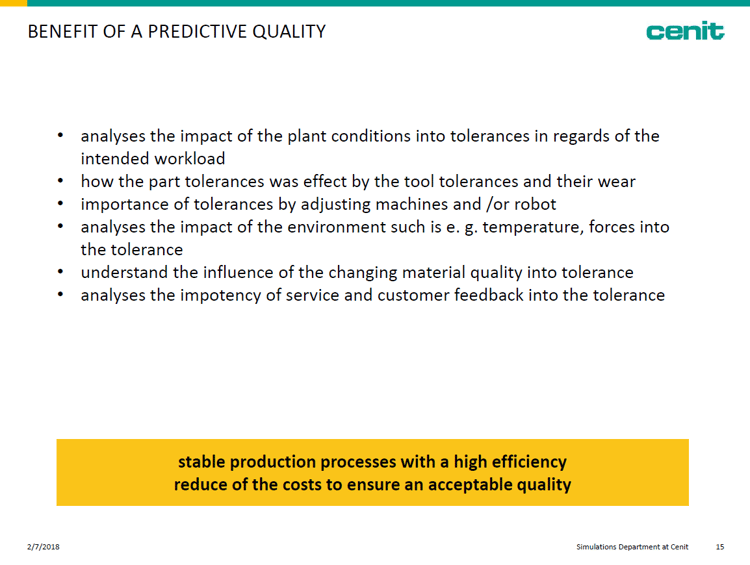Regarding tolerance analysis and management, the continually reduced development time facing manufacturers ceaselessly creates negative effects at early stages in design and development.
How geometry, mounting sequence, and tolerance concepts affect the product can all be determined by a suitable tool like 3DCS Variation Analyst. Moving these tolerance calculations to the digital twin, however, is the most important part of this process. This collection of analysis in the CAD model, the digital twin, can be regarded less as a tool and rather as a continuous process in the scope of quality.
At the Cenit user meeting in November 2017 in Germany, attendees came to a common understanding that there is no universal solution that would fit every company, but a very individual solution which has to be set up to specifically address the needs of each individual company.
Nevertheless, despite differences, there are some major common issues faced by all companies looking to adopt this process such as:
Looking at the existing market, there are companies already applying these processes to work on the interactions between theory and real world (See slide 3 of the presentation pdf below)

The understanding of this process, though, is that we are only able to check quality but unable to control it proactively.

In other words, how do we get to a digital twin?
After this comes the very important steps, such as determining how to provide the needed information in a streamlined process - e.g. who gets what, when and to what degree of detail? (see slide 5-7)
In our understanding, the correlation between incoming and outgoing information is essential.
This means not just knowing which tolerance affects the measurement but also knowing the process parameter which affects the leading tolerances.
This is one of the steps to “Predictive Quality (PQ)” (see slide 14-15). If the limits are known that the parameters must stay within, then it is possible to provide the needed level of quality, and not just check it.
Does that mean that you have to establish a ton of measurement devices and sensors in your process?
This is oftentimes the answer to using existing information for correlation. However, you can utilize your existing measurement devices, scanners and measuring arms to collect data, only now with the intent of using that data to provide the information you need to feed the digital twin.
Only one question remains,
Are you ready to control quality in a proactive way?
….why not?
DCS Guest Writer and Partner,
Ulrich Decker
CENIT AG
These Stories on 3DCS
No Comments Yet
Let us know what you think